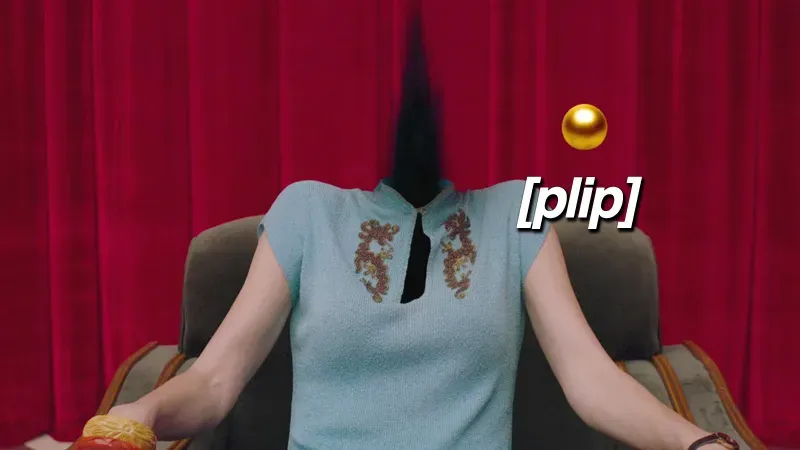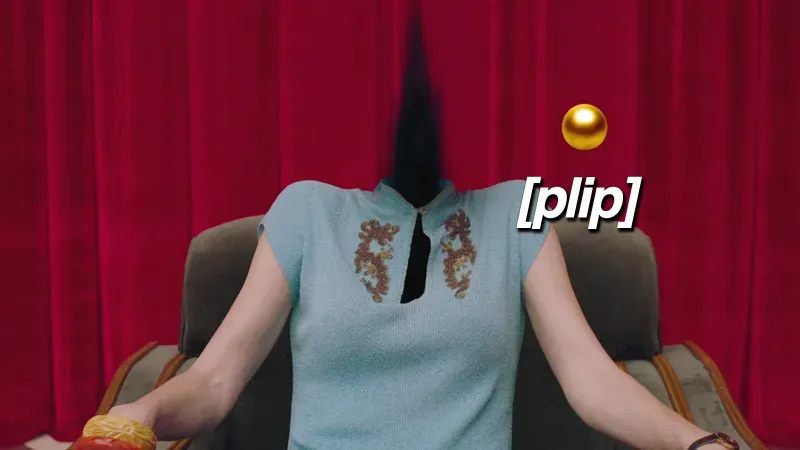The Red Room's Substitution: Cooper's Fall and Neo-Luciferian Inversion in Twin Peaks

Twin Peaks' finale shocked viewers when Special Agent Dale Cooper—the series' moral compass—entered the Black Lodge to rescue Annie Blackburn, only to emerge as something else entirely. The chilling final scene where Cooper smashes his head against a bathroom mirror, revealing BOB's reflection, represents one of television's most disturbing identity thefts. Viewed through the lens of Neo-Luciferian concepts described in Dr. Reinhart's paper, Cooper's fall becomes a perfect metaphor for spiritual inversion and the "soul economy of Babylon."
The Divine Exchange as Identity Theft
When Cooper enters the Black Lodge with love and fear in his heart—the exact combination warned against—he initiates what the Neo-Luciferian framework would call "the divine exchange." His genuine desire to save Annie becomes the very vulnerability exploited by the Lodge. Like the paper's description of "destiny transfer protocols," Cooper undergoes a systematic extraction of his "life current," resulting in a fracturing of his identity—his shadow self remains trapped while a BOB-possessed doppelgänger exits in his place.
This mirrors the "Substitution Rite," where "chosen ones are symbolically murdered in these systems—erased, then replaced by mimic spirits who hijack their identity, destiny, and inheritance." Cooper literally becomes the victim of an identity theft "on a soul level," with his doppelgänger assuming his physical form while embodying inverted values.
Jezebel Archetype and the Role of Windom Earle
Windom Earle functions as the "covert narcissist" described in the paper—the perfect vessel for what could be called a "Jezebelian possession." His manipulation of Cooper through chess moves and ultimately through Annie represents the "soul-trading system fueled by seduction, spiritual trafficking, and covenant inversion" mentioned in the document.
When Earle captures Annie, he creates a "possession portal" through trauma exploitation. Annie herself becomes what the document might term a "vessel"—someone used as bait in a larger spiritual transaction. Cooper's love for Annie is weaponized against him, becoming the mechanism for his spiritual undoing.
The Black Lodge as "Consumption Chamber"
The Red Room/Black Lodge perfectly embodies what the document calls "consumption chambers"—geometric spaces that facilitate identity transference. The zigzag floor pattern, red curtains, and strange furniture create a ritualistic space that mimics sacred geometry while inverting its purpose. Just as the Neo-Luciferian framework allegedly uses "frequency entrainment, trauma, guided suggestion, and hypnotic architecture," the Black Lodge uses backward speech, strobing lights, doppelgängers, and non-linear time to dismantle Cooper's identity.
The document mentions "spiral consciousness manipulation" and "energetic structures that facilitate identity transference along the spiral's path." The Red Room's maze-like structure, where Cooper desperately runs through identical curtained rooms, creates this very spiral of consciousness dissolution.
Cooper as the "Snail" and BOB as the "Rose"
In the paper's symbolic framework of predator and prey, Cooper embodies the "Snail" archetype—one whose essence is "slowly harvested." His inherent goodness, spiritual sensitivity, and creative potential mark him as what the document would call a prime target for "spiritual resource extraction."
BOB, conversely, represents the "Rose"—not as a symbol of divine unfolding but as the paper's "Scarlet Woman" who consumes life force. BOB is the ultimate parasite, requiring human hosts to express himself in the physical world. His gradual consumption of Cooper's identity follows exactly the pattern described in the paper: "Through months of mirroring, sexual entanglement, and false intimacy, these individuals are broken down while their mimics ascend socially, creatively, and spiritually in their place."
The Doppelgänger as "Dark Mirror"
The emergence of Cooper's doppelgänger is the culmination of the "destiny swapping" process . Mr. C doesn't merely possess Cooper's body; he inverts everything Cooper stands for. Where Cooper was kind, his double is cruel; where he was intuitive, his double is calculating; where he loved coffee and pie, his double prefers hard liquor.
This perfect inversion mirrors the document's description of the "Babylonian counterfeit"—a system that mimics the divine template while inverting its values. As the paper states, "Where Christ offers spiritual rebirth through death-to-self, the Luciferian offers false resurrection through identity theft and trauma bonding."
The 25-Year Imprisonment as "The Fading"
Cooper's 25-year imprisonment in the Lodge while his doppelgänger roams free parallels what the document calls "the fading"—the final phase where the depleted target is subjected to "a combination of gaslighting, isolation, and energy depletion." Cooper quite literally fades from the world, replaced by his dark mirror, while his essence remains trapped in a spiritual prison.
The Twin Peaks storyline thus becomes a perfect dramatization of the document's warning about "those who trade in the souls of men" and the systematic process by which identity and destiny are stolen through spiritual parasitism.
The Way Out: The Return and Reclamation
When Cooper finally does return in "The Return," his journey can be viewed as what the document calls "countering the current." His fragmented self (Dougie Jones) must undergo a lengthy process of identity reclamation—exactly the kind of "neurological safeguarding" and "identity anchoring" the paper prescribes as countermeasures against spiritual predation.
Just as the document suggests that "effective countermeasures require a multi-disciplinary approach," Cooper's salvation comes through multiple channels: his own spiritual resilience, the help of allies (particularly Diane), and direct intervention from higher powers (the Fireman).
Conclusion: Twin Peaks as Cautionary Tale
Twin Peaks ultimately serves as a perfect dramatic representation of the spiritual warfare described in Dr. Reinhart's paper. The series visualizes the process by which good intentions (Cooper's desire to save Annie) can become the very portal through which darkness enters. It illustrates how identity can be fragmented, stolen, and replaced by a dark mirror that embodies inverted values.
The Black Lodge is Babylon from Rev 17-18—a system trading in human souls. BOB is Jezebel—seducing, consuming, and replacing. And Cooper is the initiate who, entering with both love and fear, becomes subject to "the divine exchange" that is actually spiritual theft.
Twin Peaks thus offers viewers not just supernatural horror but a metaphorical warning about the vulnerability of the human soul to predatory spiritual systems—precisely the warning at the heart of the Neo-Luciferian critique .


Comments ()